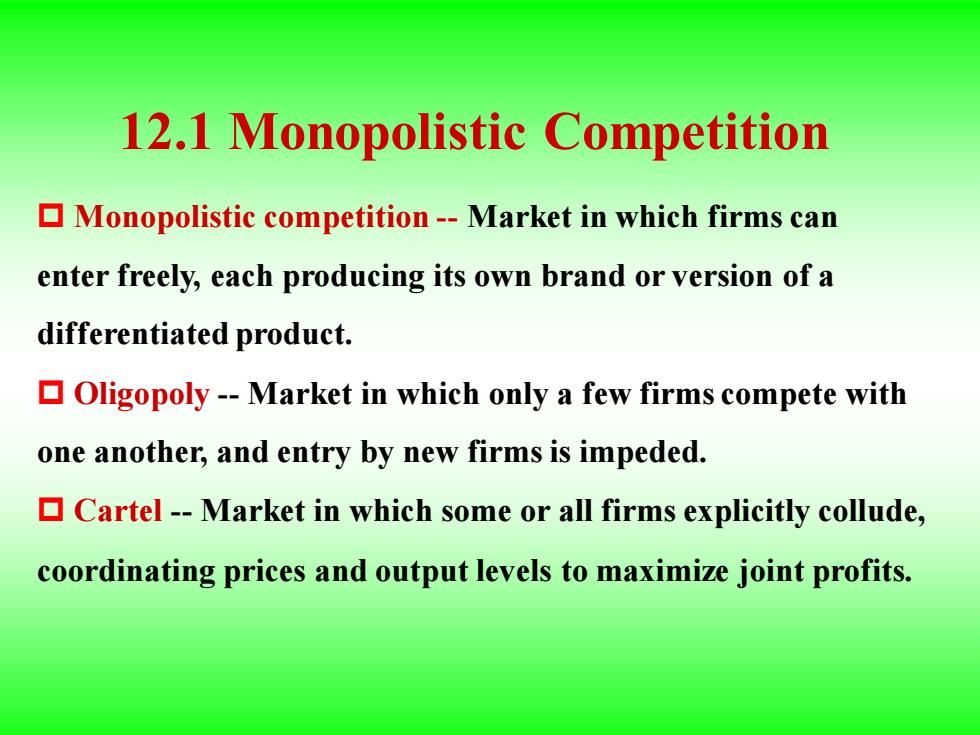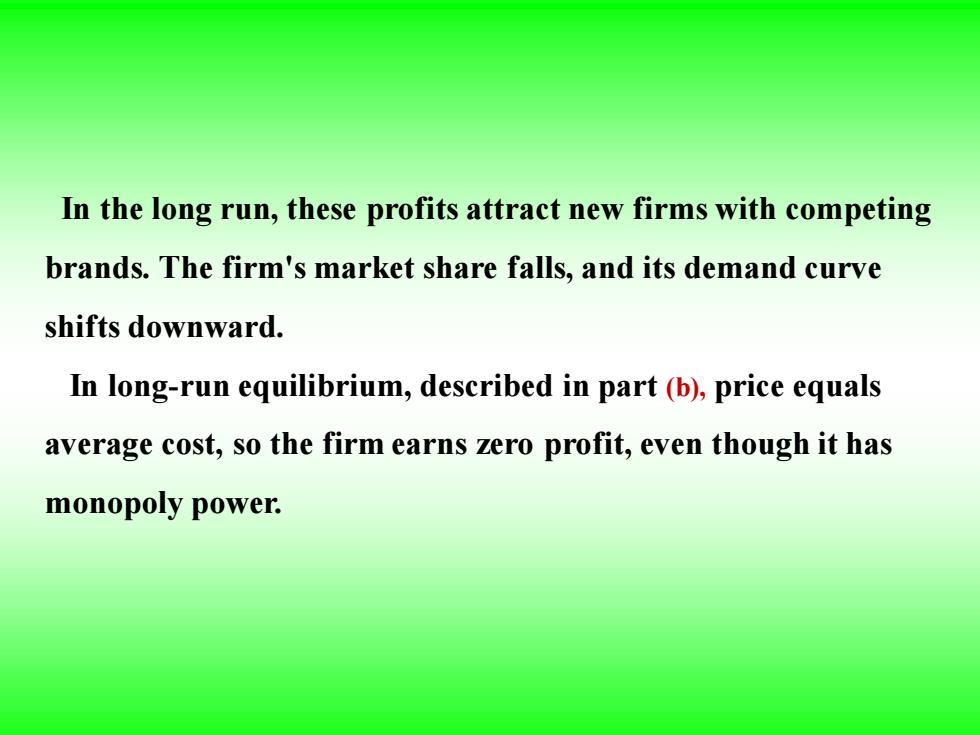
Chapter 12 Monopolistic Competition and Oligopoly Chapter Outline Monopolistic Competition ·Oligopoly(寡头垄断) ·Price Competition Competition versus Collusion:The Prisoners' Dilemma for Oligopolistic Pricing 。Cartels
Chapter 12 Monopolistic Competition and Oligopoly Chapter Outline • Monopolistic Competition • Oligopoly (寡头垄断) • Price Competition • Competition versus Collusion: The Prisoners’ Dilemma for Oligopolistic Pricing • Cartels

12.1 Monopolistic Competition Monopolistic competition-Market in which firms can enter freely,each producing its own brand or version of a differentiated product. Oligopoly-Market in which only a few firms compete with one another,and entry by new firms is impeded. Cartel-Market in which some or all firms explicitly collude, coordinating prices and output levels to maximize joint profits
12.1 Monopolistic Competition Monopolistic competition - Market in which firms can enter freely, each producing its own brand or version of a differentiated product. Oligopoly - Market in which only a few firms compete with one another, and entry by new firms is impeded. Cartel - Market in which some or all firms explicitly collude, coordinating prices and output levels to maximize joint profits

$/Q $/Q MC MC AC AC PsR P DSR 08 MRsR MRLR QSR Quantity QLR Quantity (a) 6) A Monopolistically Competitive Firm in the Short and Long Run
A Monopolistically Competitive Firm in the Short and Long Run

Because the firm is the only producer of its brand,it faces a downward-sloping demand curve: Price exceeds marginal cost and the firm has monopoly power. In the short run described in part (a),price also exceeds average cost,and the firm earns profits shown by the shaded rectangle
Because the firm is the only producer of its brand, it faces a downward-sloping demand curve: Price exceeds marginal cost and the firm has monopoly power. In the short run described in part (a), price also exceeds average cost, and the firm earns profits shown by the shaded rectangle

In the long run,these profits attract new firms with competing brands.The firm's market share falls,and its demand curve shifts downward. In long-run equilibrium,described in part (b),price equals average cost,so the firm earns zero profit,even though it has monopoly power
In the long run, these profits attract new firms with competing brands. The firm's market share falls, and its demand curve shifts downward. In long-run equilibrium, described in part (b), price equals average cost, so the firm earns zero profit, even though it has monopoly power